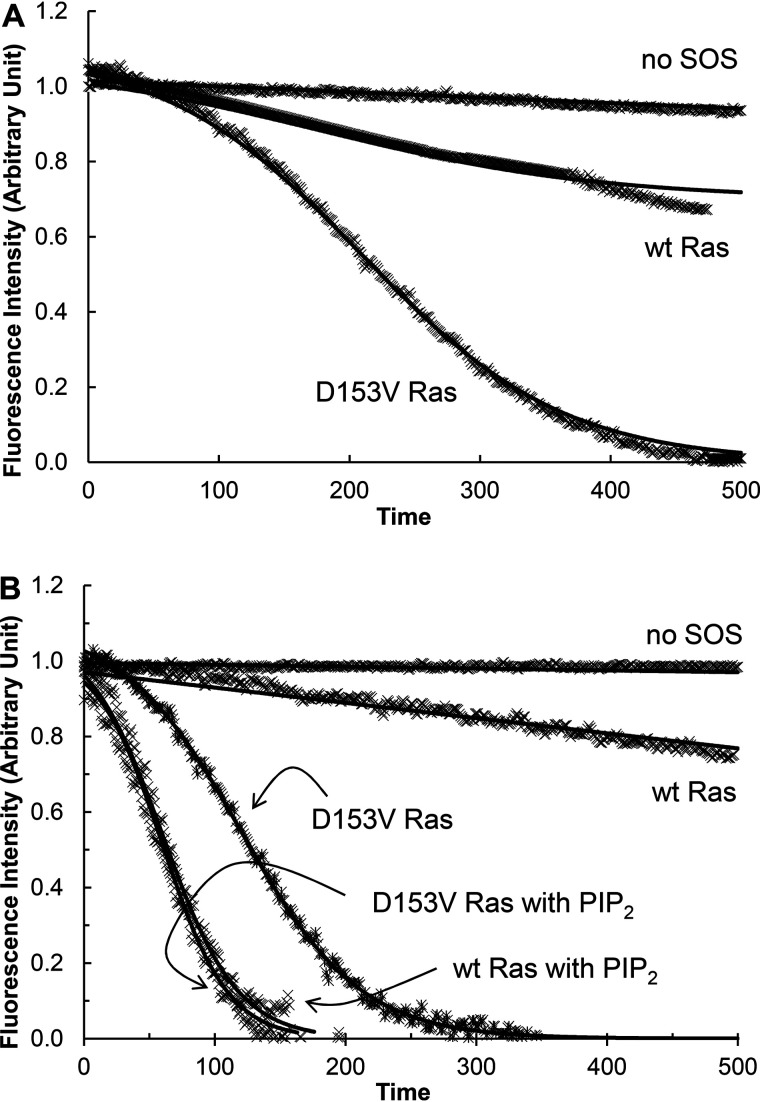Figure 3.
Autoactivation of SOS with WT and D153V mutant Ras. Fluorescence mant-based SOS autoactivation assays were performed with WT and D153V Ras in solution (A) and tethered to the lipid vesicle (B). Given that a reaction initiator is necessary to start SOS autoactivation, in all assays unless otherwise unnecessary, a GTP analog GppNHp-bound active Ras in solution or tethered to the lipid vesicle (30% of total Ras mole fraction) was added before the assay was initiated. Initiation was by the addition of SOSmemb-cat (1 μm) to an assay cuvette that contained Ras·mdGDP (1 μm) in solution or tethered to the lipid vesicle in the presence of excess GppNHp (1 mm) in an assay buffer. Once the assay was initiated, we monitored the change in the intensity of mant fluorescence over time as described under “Experimental procedures.” When necessary, Ras tethered to the PIP2-containing lipid vesicle, instead of Ras tethered to the lipid vesicle, was also used for the assay (B). The SOS autoactivation data fit was performed as described in the previous study (26) that gave the kauto values of SOSmemb-cat with WT and D153V Ras in solution as >1500 and 219 s, respectively. The kauto values of SOSmemb-cat with WT Ras tethered to the lipid vesicle (PIP2 lacking) and the PIP2-containing lipid vesicle were determined to be >1500 and 129 s, respectively. The kauto values of SOSmemb-cat with D153V Ras tethered to the lipid vesicle (that lacks PIP2) and the PIP2-containing lipid vesicle were determined to be 484 and 133 s, respectively. For all analyses, triplicate experiments were performed, and the graphic figures close to the average values are shown.

